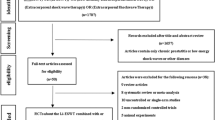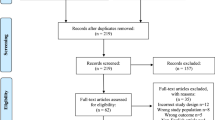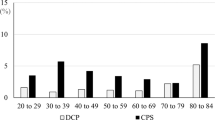Abstract
Background:
Chronic prostatitis/chronic pelvic pain syndrome (CP/CPPS), also known as NIH Category III Prostatitis is a highly prevalent syndrome with significant impact on quality of life. As a heterogeneous syndrome, there exists no ‘one size fits all’ therapy with level 1 evidence to guide therapy. This often leads to a nihilistic approach to patients and clinical outcomes are poor. In this review, we examine the evidence for CP/CPPS therapies and discuss our technique of clinical phenotyping combined with multimodal therapy.
Methods:
Review of Medline articles with terms ‘non-bacterial prostatitis’, ‘abacterial prostatitis’ and ‘chronic pelvic pain syndrome’.
Results:
Many individual therapies have been evaluated in the treatment of CP/CPPS; antibiotics, anti-inflammatory medications (including bioflavonoids), neuromodulators, alpha blockers, pelvic floor physical therapy and cognitive behavior therapy. Each of these has been found to have varying success in alleviating symptoms. UPOINT is a system of clinical phenotyping for CP/CPPS patients that has 6 defined domains, which guide multimodal therapy. It has been validated to correlate with symptom burden and therapy guided by UPOINT leads to significant symptom improvement in 75–84% of patients based on three independent studies.
Conclusions:
CP/CPPS is a heterogeneous condition and, much like with prostate cancer, optimal therapy can only be achieved by classifying patients into clinically meaningful phenotypic groups (much like TNM) and letting the phenotype drive therapy.
This is a preview of subscription content, access via your institution
Access options
Subscribe to this journal
Receive 4 print issues and online access
$259.00 per year
only $64.75 per issue
Buy this article
- Purchase on Springer Link
- Instant access to full article PDF
Prices may be subject to local taxes which are calculated during checkout

Similar content being viewed by others
References
Clemens JQ, Meenan RT, O'Keeffe Rosetti MC, Kimes T, Calhoun EA . Prevalence of and risk factors for prostatitis: population based assessment using physician assigned diagnoses. J Urol 2007; 178 (4 Pt 1): 1333–1337.
Roberts RO, Lieber MM, Rhodes T, Girman CJ, Bostwick DG, Jacobsen SJ . Prevalence of a physician-assigned diagnosis of prostatitis: the olmsted county study of urinary symptoms and health status among men. Urology 1998; 51: 578–584.
Krieger JN, Nyberg L Jr, Nickel JC . NIH consensus definition and classification of prostatitis. JAMA 1999; 282: 236–237.
Calhoun EA, Clemens JQ, Litwin MS, Walker-Corkery E, Markossian T, Kusek JW et al. Primary care physician practices in the diagnosis, treatment and management of men with chronic prostatitis/chronic pelvic pain syndrome. Prostate Cancer Prostatic Dis 2009; 12: 288–295.
McNaughton Collins M, Fowler FJ, Elliott DB, Albertsen PC, Barry MJ . Diagnosing and treating chronic prostatitis: do urologists use the four-glass test? Urology 2000; 55: 403–407.
Shoskes DA, Landis JR, Wang Y, Nickel JC, Zeitlin SI, Nadler R Chronic Prostatitis Collaborative Research Network Study Group. Impact of post-ejaculatory pain in men with category III chronic prostatitis/chronic pelvic pain syndrome. J Urol 2004; 172: 542–547.
Shoskes DA, Berger R, Elmi A, Landis JR, Propert KJ, Zeitlin S Group CPCRNS. Muscle tenderness in men with chronic prostatitis/chronic pelvic pain syndrome: the chronic prostatitis cohort study. J Urol 2008; 179: 556–560.
Forrest JB, Schmidt S . Interstitial cystitis, chronic nonbacterial prostatitis and chronic pelvic pain syndrome in men: a common and frequently identical clinical entity. J Urol 2004; 172 (6 Pt 2): 2561–2562.
Tripp DA, Nickel JC, Wang Y, Litwin MS, McNaughton-Collins M, Landis JR et al. Catastrophizing and pain-contingent rest predict patient adjustment in men with chronic prostatitis/chronic pelvic pain syndrome. J Pain 2006; 7: 697–708.
Litwin MS, McNaughton-Collins M, Fowler FJ, Nickel JC, Calhoun EA, Pontari MA et al. The National Institutes of Health chronic prostatitis symptom index: development and validation of a new outcome measure. J Urol 1999; 162: 369–375.
Propert KJ, Litwin MS, Wang Y, Alexander RB, Calhoun E, Nickel JC et al. Responsiveness of the national institutes of health chronic prostatitis symptom index (NIH-CPSI). Qual Life Res 2006; 15: 299–305.
Nickel JC, Shoskes D, Wang Y, Alexander RB, Fowler JE, Zeitlin S et al. How does the pre-massage and post-massage 2-glass test compare to the meares-stamey 4-glass test in men with chronic prostatitis/chronic pelvic pain syndrome? J Urol 2006; 176: 119–124.
Hou DS, Long WM, Shen J, Zhao LP, Pang XY, Xu C . Characterisation of the bacterial community in expressed prostatic secretions from patients with chronic prostatitis/chronic pelvic pain syndrome and infertile men: a preliminary investigation. Asian J Androl 2012; 14: 566–573.
Ivanov IB, Kuzmin MD, Gritsenko VA . Microflora of the seminal fluid of healthy men and men suffering from chronic prostatitis syndrome. Int J Androl 2009; 32: 462–467.
Nickel JC, Stephens A, Landis JR, Chen J, Mullins C, van Bokhoven A et al. Search for microorganisms in men with urologic chronic pelvic pain syndrome: a culture-independent analysis in the MAPP research network. J Urol 2015; 194: 127–135.
Murphy AB, Nadler RB . Pharmacotherapy strategies in chronic prostatitis/chronic pelvic pain syndrome management. Expert Opin Pharmacother 2010; 11: 1255–1261.
Magri V, Montanari E, Škerk V, Markotić A, Marras E, Restelli A et al. Fluoroquinolone-macrolide combination therapy for chronic bacterial prostatitis: retrospective analysis of pathogen eradication rates, inflammatory findings and sexual dysfunction. Asian J Androl 2011; 13: 819–827.
Perletti G, Marras E, Wagenlehner FM, Magri V . Antimicrobial therapy for chronic bacterial prostatitis. Cochrane Database Syst Rev 2013; 8: CD009071.
Xiao J, Ren L, Lv H, Ding Q, Lou S, Zhang W et al. Atypical microorganisms in expressed prostatic secretion from patients with chronic prostatitis/chronic pelvic pain syndrome: microbiological results from a case-control study. Urol Int 2013; 91: 410–416.
Potts JM, Ward AM, Rackley RR . Association of chronic urinary symptoms in women and ureaplasma urealyticum. Urology 2000; 55: 486–489.
Nickel JC, Downey J, Clark J, Casey RW, Pommerville PJ, Barkin J et al. Levofloxacin for chronic prostatitis/chronic pelvic pain syndrome in men: a randomized placebo-controlled multicenter trial. Urology 2003; 62: 614–617.
Galley HF, Nelson SJ, Dubbels AM, Webster NR . Effect of ciprofloxacin on the accumulation of interleukin-6, interleukin-8, and nitrite from a human endothelial cell model of sepsis. Crit Care Med 1997; 25: 1392–1395.
Yoshimura T, Kurita C, Usami E, Nakao T, Watanabe S, Kobayashi J et al. Immunomodulatory action of levofloxacin on cytokine production by human peripheral blood mononuclear cells. Chemotherapy 1996; 42: 459–464.
Sadarangani SP, Estes LL, Steckelberg JM . Non-anti-infective effects of antimicrobials and their clinical applications: a review. Mayo Clin Proc 2015; 90: 109–127.
Guo H, Xu YM, Ye ZQ, Yu JH . Levels of cytokines and heat-shock protein 70 in the seminal plasma of patients with chronic bacterial prostatitis and chronic prostatitis/chronic pelvic pain syndrome. Zhonghua Nan Ke Xue 2012; 18: 1088–1092.
Nickel JC, Alexander RB, Schaeffer AJ, Landis JR, Knauss JS, Propert KJ Chronic Prostatitis Collaborative Research Network Study Group. Leukocytes and bacteria in men with chronic prostatitis/chronic pelvic pain syndrome compared to asymptomatic controls. J Urol 2003; 170: 818–822.
Nickel JC, Pontari M, Moon T, Gittelman M, Malek G, Farrington J et al. A randomized, placebo controlled, multicenter study to evaluate the safety and efficacy of rofecoxib in the treatment of chronic nonbacterial prostatitis. J Urol 2003; 169: 1401–1405.
Zhao WP, Zhang ZG, Li XD, Yu D, Rui XF, Li GH et al. Celecoxib reduces symptoms in men with difficult chronic pelvic pain syndrome (category IIIA). Braz J Med Biol Res 2009; 42: 963–967.
Bates SM, Hill VA, Anderson JB, Chapple CR, Spence R, Ryan C et al. A prospective, randomized, double-blind trial to evaluate the role of a short reducing course of oral corticosteroid therapy in the treatment of chronic prostatitis/chronic pelvic pain syndrome. BJU Int 2007; 99: 355–359.
Seo MJ, Lee YJ, Hwang JH, Kim KJ, Lee BY . The inhibitory effects of quercetin on obesity and obesity-induced inflammation by regulation of MAPK signaling. J Nutr Biochem 2015; 26: 1308–1316.
Liao YR, Lin JY . Quercetin intraperitoneal administration ameliorates lipopolysaccharide-induced systemic inflammation in mice. Life Sci 2015; 137: 89–97.
Shoskes DA, Zeitlin SI, Shahed A, Rajfer J . Quercetin in men with category III chronic prostatitis: a preliminary prospective, double-blind, placebo-controlled trial. Urology 1999; 54: 960–963.
Wagenlehner FM, Schneider H, Ludwig M, Schnitker J, Brähler E, Weidner W . A pollen extract (cernilton) in patients with inflammatory chronic prostatitis-chronic pelvic pain syndrome: a multicentre, randomised, prospective, double-blind, placebo-controlled phase 3 study. Eur Urol 2009; 56: 544–551.
Pranikoff K, Constantino G . The use of amitriptyline in patients with urinary frequency and pain. Urology 1998; 51: 179–181.
van Ophoven A, Pokupic S, Heinecke A, Hertle L . A prospective, randomized, placebo controlled, double-blind study of amitriptyline for the treatment of interstitial cystitis. J Urol 2004; 172: 533–536.
Rosner H, Rubin L, Kestenbaum A . Gabapentin adjunctive therapy in neuropathic pain states. Clin J Pain 1996; 12: 56–58.
Backonja M, Glanzman RL . Gabapentin dosing for neuropathic pain: evidence from randomized, placebo-controlled clinical trials. Clin Ther 2003; 25: 81–104.
Sasaki K, Smith CP, Chuang YC, Lee JY, Kim JC . Chancellor MB. Oral gabapentin (neurontin) treatment of refractory genitourinary tract pain. Tech Urol 2001; 7: 47–49.
Sator-Katzenschlager SM, Scharbert G, Kress HG, Frickey N, Ellend A, Gleiss A et al. Chronic pelvic pain treated with gabapentin and amitriptyline: a randomized controlled pilot study. Wien Klin Wochenschr 2005; 117: 761–768.
Krieger JN, Litwin MS, White PC, Anderson RU, McNaughton-Collins M, Nickel JC et al. Pregabalin for the treatment of men with chronic prostatitis/chronic pelvic pain syndrome: A randomized controlled trial. Arch Intern Med 2010; 170: 1586.
Evliyaoğlu Y, Burgut R . Lower urinary tract symptoms, pain and quality of life assessment in chronic non-bacterial prostatitis patients treated with alpha-blocking agent doxazosin; versus placebo. Int Urol Nephrol 2002; 34: 351–356.
Gül O, Eroğlu M, Ozok U . Use of terazosine in patients with chronic pelvic pain syndrome and evaluation by prostatitis symptom score index. Int Urol Nephrol 2001; 32: 433–436.
Cheah PY, Liong ML, Yuen KH, Teh CL, Khor T, Yang JR et al. Terazosin therapy for chronic prostatitis/chronic pelvic pain syndrome: a randomized, placebo controlled trial. J Urol 2003; 169: 592–596.
Chen Y, Wu X, Liu J, Tang W, Zhao T, Zhang J . Effects of a 6-month course of tamsulosin for chronic prostatitis/chronic pelvic pain syndrome: a multicenter, randomized trial. World J Urol 2011; 29: 381–385.
Krieger JN, McNaughton-Collins M, Anderson RU, Pontari M, Shoskes DA, Litwin MS et al. Alfuzosin and symptoms of chronic prostatitis–chronic pelvic pain syndrome. N Engl J Med 2008; 359: 2663.
Yang G, Wei Q, Li H, Yang Y, Zhang S, Dong Q . The effect of alpha-adrenergic antagonists in chronic prostatitis/chronic pelvic pain syndrome: a meta-analysis of randomized controlled trials. J Androl 2006; 27: 847–852.
Michel MC . Alpha1-adrenoceptors and ejaculatory function. Br J Pharmacol 2007; 152: 289–290.
Anderson RU, Sawyer T, Wise D, Morey A, Nathanson BH . Painful myofascial trigger points and pain sites in men with chronic prostatitis/chronic pelvic pain syndrome. J Urol 2009; 182: 2753–2758.
Anderson R, Wise D, Sawyer T, Nathanson BH . Safety and effectiveness of an internal pelvic myofascial trigger point wand for urologic chronic pelvic pain syndrome. Clin J Pain 2011; 27: 764–768.
Anderson RU, Wise D, Sawyer T, Glowe P, Orenberg EK . 6-day intensive treatment protocol for refractory chronic prostatitis/chronic pelvic pain syndrome using myofascial release and paradoxical relaxation training. J Urol 2011; 185: 1294–1299.
Anderson RU, Wise D, Sawyer T, Chan CA . Sexual dysfunction in men with chronic prostatitis/chronic pelvic pain syndrome: Improvement after trigger point release and paradoxical relaxation training. J Urol 2006; 176: 1534–1538; discussion 1538-9.
Anderson RU, Wise D, Sawyer T, Chan C . Integration of myofascial trigger point release and paradoxical relaxation training treatment of chronic pelvic pain in men. J Urol 2005; 174: 155–160.
Fitzgerald MP, Anderson RU, Potts J, Payne CK, Peters KM, Clemens JQ et al. Randomized multicenter feasibility trial of myofascial physical therapy for the treatment of urological chronic pelvic pain syndromes. J Urol 2013; 189 (1 Suppl): S75–S85.
Polackwich AS, Li J, Shoskes DA . Patients with pelvic floor muscle spasm have a superior response to pelvic floor physical therapy at specialized centers. J Urol 2015; 194: 1002–1006.
Naliboff BD, Stephens AJ, Afari N, Lai H, Krieger JN, Hong B et al. Widespread psychosocial difficulties in men and women with urologic chronic pelvic pain syndromes: case-control findings from the multidisciplinary approach to the study of chronic pelvic pain research network. Urology 2015; 85: 1319–1327.
Koh JS, Ko HJ, Wang SM, Cho KJ, Kim JC, Lee SJ et al. Depression and somatic symptoms may influence on chronic prostatitis/chronic pelvic pain syndrome: A preliminary study. Psychiatry Investig 2014; 11: 495–498.
Nickel JC, Mullins C, Tripp DA . Development of an evidence-based cognitive behavioral treatment program for men with chronic prostatitis/chronic pelvic pain syndrome. World J Urol 2008; 26: 167–172.
Monticone M, Ambrosini E, Cedraschi C, Rocca B, Fiorentini R, Restelli M et al. Cognitive-behavioural treatment for subacute and chronic neck pain: a cochrane review. Spine (Phila Pa 1976) 2015; 5: CD010664.
Giannantoni A, Porena M, Gubbiotti M, Maddonni S, Di Stasi SM . The efficacy and safety of duloxetine in a multidrug regimen for chronic prostatitis/chronic pelvic pain syndrome. Urology 2014; 83: 400–405.
Nickel JC, Shoskes DA . Phenotypic approach to the management of the chronic prostatitis/chronic pelvic pain syndrome. BJU Int 2010; 106: 1252–1263.
Shoskes DA, Nickel JC, Kattan MW . Phenotypically directed multimodal therapy for chronic prostatitis/chronic pelvic pain syndrome: a prospective study using UPOINT. Urology 2010; 75: 1249–1253.
Shoskes DA, Nickel JC, Dolinga R, Prots D . Clinical phenotyping of patients with chronic prostatitis/chronic pelvic pain syndrome and correlation with symptom severity. Urology 2009; 73: 538–542; discussion 542–543.
Zhao Z, Zhang J, He J, Zeng G . Clinical utility of the UPOINT phenotype system in chinese males with chronic prostatitis/chronic pelvic pain syndrome (CP/CPPS): a prospective study. PLoS One 2013; 8: e52044.
Guan X, Zhao C, Ou ZY, Wang L, Zeng F, Qi L . Use of the UPOINT phenotype system in treating chinese patients with chronic prostatitis/chronic pelvic pain syndrome: a prospective study. Asian J Androl 2015; 17: 120.
Magri V, Marras E, Restelli A, Wagenlehner FM, Perletti G . Multimodal therapy for category III chronic prostatitis/chronic pelvic pain syndrome in UPOINTS phenotyped patients. Exp Ther Med 2015; 9: 658–666.
Parkes GC, Rayment NB, Hudspith BN, Petrovska L, Lomer MC, Brostoff J et al. Distinct microbial populations exist in the mucosa-associated microbiota of sub-groups of irritable bowel syndrome. Neurogastroenterol Motil 2012; 24: 31–39.
Nickel JC, Tripp DA, Pontari M, Moldwin R, Mayer R, Carr LK et al. Interstitial cystitis/painful bladder syndrome and associated medical conditions with an emphasis on irritable bowel syndrome, fibromyalgia and chronic fatigue syndrome. J Urol 2010; 184: 1358–1363.
Etxeberria U, Arias N, Boqué N, Macarulla MT, Portillo MP, Martínez JA et al. Reshaping faecal gut microbiota composition by the intake of trans-resveratrol and quercetin in high-fat sucrose diet-fed rats. J Nutr Biochem 2015; 26: 651–660.
Litwin MS, McNaughton-Collins M, Fowler FJ Jr, Nickel JC . The National Institutes of Health chronic prostatitis symptom index: development and validation of a new outcome measure. Chronic Prostatitis Collaborative Research Network. J Urol 1999; 162: 369–375.
Author information
Authors and Affiliations
Corresponding author
Ethics declarations
Competing interests
DAS is Consulting for Farr Laboratories and Investment interest in Triurol. The remaining author declares no conflict of interest.
Rights and permissions
About this article
Cite this article
Polackwich, A., Shoskes, D. Chronic prostatitis/chronic pelvic pain syndrome: a review of evaluation and therapy. Prostate Cancer Prostatic Dis 19, 132–138 (2016). https://doi.org/10.1038/pcan.2016.8
Received:
Revised:
Accepted:
Published:
Issue Date:
DOI: https://doi.org/10.1038/pcan.2016.8
This article is cited by
-
The diagnostic yield of the Meares & Stamey test can be significantly improved by symptom-based patient selection and the experience of the test performer
Prostate Cancer and Prostatic Diseases (2024)
-
The efficacy and safety of low-intensity extracorporeal shock wave treatment combined with or without medications in Chronic prostatitis/chronic pelvic pain syndrome: a systematic review and meta-analysis
Prostate Cancer and Prostatic Diseases (2023)
-
Radial Extracorporeal Shock Wave Therapy Combined with Resveratrol Derivative Alleviates Chronic Nonbacterial Prostatitis in Rats
Inflammation (2023)
-
Efficacy and Safety of Guihuang Formula in Treating Type III Prostatitis Patients with Dampness-Heat and Blood Stasis Syndrome: A Randomized Controlled Trial
Chinese Journal of Integrative Medicine (2022)
-
Dihydroartemisinin ameliorates chronic nonbacterial prostatitis and epithelial cellular inflammation by blocking the E2F7/HIF1α pathway
Inflammation Research (2022)



